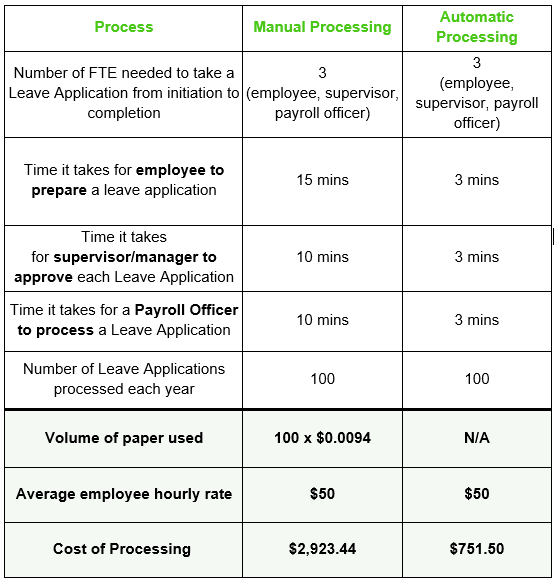
It is no surprise that in the era of smartphones we have adapted to expect things instantaneously – being able to simply order a meal, pay a bill or book a weekend away has taught us to expect quick, streamlined services and consequently has made tedious paper-based processes feel even more unbearable.
That is why automated workflows are becoming increasingly popular within schools. In fact, in 2020 The Alpha School System (TASS) team experienced the most enquiries about workflows and automated efficiencies ever; highlighting the push from schools to simplify business operations.
Workflows save time and resources
Perhaps the most obvious and important benefit of workflows is the time and resources they can save you. A 2017 study by Smartsheet found that 40% of participants surveyed spent at least a quarter of their workweek on repetitive tasks. Think about the time it takes for your Payroll Officer to receive, manually enter, and approve leave applications. What if this task could be completed online and automated? How much time and resources would that save you over the course of a school year?
The true cost of time
Let’s dive deeper and see how much time automation can really save you. The best way to do this is with a cost-benefit analysis. Below is a generic example of a leave application process – comparing manual and automatic processing time and costs.

Based on the example, automatic processing is 74% cheaper and quicker than manual processing. Think about how this time could be diverted and used elsewhere, lowering costs, and creating healthier profit margins.
Workflows can reduce the room for human error
Humans make mistakes. It is an incredibly obvious statement, however, when considering the benefits of workflows it is an important consideration. Human mistakes often occur due to time restraints, fatigue, stress, or a simple misstep in the process. However, unlike humans, software does not get distracted from the task at hand and it is hard for it to make a mistake. Software is not going to accidentally miss a sheet of paper in a large stack and it is also less likely to lose a document that contains sensitive information such as payment or medical details.
Workflows can improve employee wellbeing
The Smartsheet (2017) study also found that 78% of participants believe automation allows them to spend more time on the interesting and rewarding aspects of their job. Repetitive data entry can wear employees down, leading them to become disgruntled with the process and eventually disconnect from their job.
Workflows tackle the routine administrative procedures, allowing your staff to have increased productivity, job satisfaction and subsequently, lead to more business profitability.
Workflows can improve communication
People are seemingly busier than ever and don’t have the time to find things, rather they need to be told that something requires their attention. Workflows often contain three types of communications: notifications, reminders, and confirmations.
For example, with a parent payment schedules workflow, the automation can recognise that a payment is due soon and send the parent a notification which is later followed up by a reminder to tell them that it will be processed in the coming days. Finally, they receive a confirmation that the payment was processed.
So, after all of that, what are the top 10 workflows your school should look to automate? Click here to find out.


